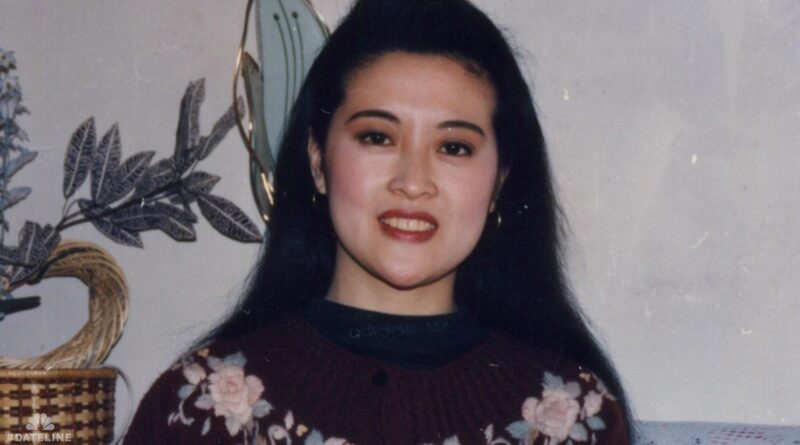Angela Green Disappears in Prairie Village Kansas
On the evening of June 20, 2019, the lives of Prairie Village residents were upended when 51‑year‑old Angela Green vanished from her family home. A reserved and soft‑spoken woman, Angela’s sudden and inexplicable disappearance sparked confusion, suspicion, and an exhaustive search that has spanned years. Despite countless leads, searches, and media attention, no definitive trace of Angela has ever been found. Her case remains one of the most baffling missing‑person mysteries in the Kansas City metropolitan area, and the questions it raises continue to haunt family, friends, and investigators alike.
A Life Defined by Devotion and Isolation
Born and raised outside Kansas City, Angela moved to Prairie Village after marrying Geoff Green in 1998. Friends describe her as deeply devoted to her family—especially to her only daughter, Ellie. Angela rarely ventured beyond her home, dedicating herself to domestic life. She never held a job outside the house, did not maintain personal financial accounts, and seldom left the neighborhood. Though this insular lifestyle worried some, those closest to her believed it was a choice born of contentment rather than fear.
From the day she married Geoff, Angela embraced the roles of wife and mother fully. She accompanied Ellie to piano lessons, prepared family dinners, and volunteered at church functions. Behind closed doors, however, Angela battled anxiety—sometimes severe enough to keep her confined to home for days at a time. But always, she found solace in routine: morning coffee on the back porch, Sunday worship, and nightly phone calls to her sister. It was a life built on predictability, one that would make her sudden absence all the more shocking.
A Final Argument and an Unanswered Cry
The last confirmed sighting of Angela occurred in the late afternoon of June 20, 2019. According to Ellie, a heated argument erupted between mother and daughter—Ellie had returned home early from a semester abroad in Italy, and her unexpected arrival triggered a clash over boundaries and responsibility. Hurt and angry, Ellie stormed out of the house, convinced Angela would soon follow. She did not.
Neighbors later reported hearing raised voices but saw no one leave the Green residence. Angela’s car remained in the driveway, and the front door showed no signs of forced entry. Inexplicably, the motion‑activated outdoor lights failed to activate, a quirk no one had noted before. Inside the home, furniture sat undisturbed, and personal effects—Angela’s purse, jewelry, and passport—were all in place. It was as if she had simply vanished into thin air.
Contradictory Tales from a Husband in Distress
Within days of Angela’s disappearance, her husband Geoff began offering explanations that grew increasingly fantastical. First, he claimed Angela had been involuntarily committed to a psychiatric facility; no records at local hospitals or mental‑health centers supported this. Next, Geoff asserted she had suffered a massive stroke and died; he even displayed an urn he said contained her ashes. When pressed, he allowed Ellie to inspect the urn, which proved empty.
As skepticism mounted, Geoff abandoned these accounts and insisted he had no idea where Angela was or why she had vanished. His shifting narratives sowed doubt among friends and law enforcement alike. By the time police conducted their first thorough welfare check, it was clear that Angela had never been admitted to any facility, nor had any death certificate been filed. The inconsistencies in Geoff’s story would become a central focus of the investigation.
The Long Road to a Missing‑Person Report
Remarkably, Angela was not reported missing until February 2020—nearly eight months after her disappearance. Ellie, then a junior at the University of Kansas, had clung to hope that her mother would return. It was only after confiding in an aunt and encountering blank stares at local hospitals that Ellie realized the gravity of the situation. She filed the missing‑person report with the Prairie Village Police Department, setting in motion a formal inquiry that would draw in state and federal resources.
The delay in reporting has been a point of contention among investigators. Police acknowledge that the time lapse allowed valuable evidence to dissipate—but they emphasize that Angela was an adult with a history of anxiety, making an initial assumption of voluntary absence understandable. Nonetheless, the long hiatus between disappearance and reporting would complicate search efforts.
Exhaustive Searches Yield No Answers
With the case officially open, law enforcement launched expansive searches of two key locations: the Green family home on Tomahawk Road and a nearby car‑repair storage lot in Olathe owned by Geoff. The Prairie Village residence was scoured for forensic clues—footprints, fingerprints, fibers—but yielded nothing definitive. Investigators then turned their attention to the Olathe lot, where Geoff maintained a storage shed and a 30‑foot mound of dirt excavated from local courthouse renovations.
Using cadaver dogs, dive teams in a pond adjacent to the lot, and ground‑penetrating radar, search teams probed every inch of soil and water. The pile of dirt, rich in clay and mixed with construction debris, drew particular scrutiny; divers and excavation crews sifted through its layers day after day. Yet no trace of human remains, personal belongings, or biological evidence ever surfaced. Tips poured in after a Crime Stoppers announcement, but each lead ended at a dead end.
The Daughter’s Crusade for Justice
Ellie Green’s life changed irrevocably with her mother’s disappearance. Faced with grief and doubt, she transferred schools, switched her major to journalism, and partnered with true‑crime podcasters to publicize Angela’s case. Through interviews, blog posts, and social‑media campaigns, Ellie has kept her mother’s story alive—ensuring that local news outlets reissue Angela’s missing‑person poster each June 20.
In one notable collaboration, Ellie appeared on a national podcast where she recounted the last day she saw her mother and challenged her father’s inconsistent statements. The episode generated significant interest, reviving public attention and prompting additional tips. Driven by love and frustration, Ellie continues to urge anyone with information, no matter how trivial, to come forward.
Theories, Rumors, and Speculation
In the absence of hard evidence, speculation about Angela Green’s fate runs rampant. Some believe Geoff orchestrated a “perfect crime,” using his knowledge of the home and local terrain to conceal all traces. Others speculate that Angela, fearful or confused after the argument with Ellie, fled the scene voluntarily and met with foul play elsewhere. A fringe theory suggests Angela entered witness‑protection, though investigators dismiss this as fanciful.
Rumors of clandestine graves in Geoff’s yard circulated on social media, prompting amateur searches by private individuals. Investigative journalists fact‑checked these claims and found no corroborating proof. While the rumor mill intensifies every anniversary of Angela’s disappearance, law enforcement maintains that only verifiable leads will break the case open.
The Community Responds
Prairie Village, known for its tree‑lined streets and quiet neighborhoods, was unprepared for a mystery of this magnitude. Town hall meetings and neighborhood watch groups dedicated special sessions to discuss the Green case. Local businesses donated billboards and printed materials to raise awareness. Churches held candlelight vigils on the first anniversary, and residents organized neighborhood searches.
Despite these efforts, many locals admit to unease—no one expected such a sinister mystery at the heart of their community. The collective anxiety has led some residents to install doorbell cameras and outdoor lighting systems. Meanwhile, local true‑crime enthusiasts have formed discussion groups online, dissecting every known fact and debating potential leads.
The Role of Media and Podcasts
National true‑crime media outlets latched onto Angela’s story, drawn by the elements of family discord, empty urn, and missing body. Crime Junkie, My Favorite Murder, and other high‑profile podcasts dedicated full episodes to the case, dissecting each twist and turn. These broadcasts brought in listeners from across the country, some of whom contacted authorities with fresh tips.
Television news teams from Kansas City to New York aired segments on Angela’s disappearance, often interviewing Geoff, Ellie, and law enforcement. While media coverage surged around the case’s anniversaries, it often lacked new information. For those following the story, the repetitive cycle of speculation grew frustrating—but it kept Angela’s name in the public consciousness.
Rewards and Private Investigations
To incentivize information, Crime Stoppers and a private investigator—hired by Angela’s extended family—offered combined rewards exceeding fifty thousand dollars. Flyers advertising the reward appeared on telephone poles, coffee shop bulletin boards, and highway billboards. Despite the financial incentive, only a handful of calls led to substantive leads, all of which proved unfruitful.
The private investigator’s efforts included interviews with former neighbors, background checks on acquaintances, and analysis of Geoff’s financial records. While the investigator ruled out many avenues, they acknowledged that the absence of a body or definitive crime scene hampered any prosecutable evidence.
The Human Toll: Family, Friends, and Neighbors
For Angela’s relatives, the uncertainty remains unbearable. Ellie struggles with nightmares and intrusive thoughts, often waking convinced her mother has returned. Family gatherings feel hollow without Angela’s presence, and holidays are tinged with grief. Friends of Angela recall her gentle laugh and quiet support—and lament that such a private person could be at the center of such a public tragedy.
Neighbors who once waved hello now exchange somber nods. Even local realtors note that the house on Tomahawk Road carries a stigma, making it harder to sell or rent. The disappearance has left emotional scars across multiple generations, leaving each person to grapple with unanswerable questions.
The Investigation Today
As of mid‑2025, Prairie Village Police continue to list Angela Green as a missing person. The case file remains active but cold, reviewed periodically by detectives alongside their regular caseload. Advances in forensic technology offer a glimmer of hope: cold‑case specialists suggest that soil samples preserved from the initial searches could one day yield new DNA evidence. But until then, Angela’s fate remains unknown.
Law enforcement periodically reissues Angela’s missing‑person poster, adds updates to national databases, and meets with Elllie to discuss any fresh leads. Despite the slow pace of progress, both family and police affirm their commitment to seeking the truth—and to bringing closure to a deeply wounded community.
Reflections on a Mystery Unresolved
The disappearance of Angela Green stands as a stark reminder that even in safe suburbs, unimaginable tragedies can occur. A silent argument, a vanished mother, an empty urn—these details challenge our faith in ordinary life. After more than six years, the case resists narrative resolution: it is neither solved nor forgotten.
Angela Green’s story compels us to consider the fragility of routine, the shadowy spaces within domestic life, and the power of perseverance. Her absence is more than a missing‑person statistic; it is a wound left open, calling for answers that may never come. Yet hope endures—in Ellie’s tireless advocacy, in the public’s curiosity, and in the belief that one day, someone will speak up.
Discover more from City Towner
Subscribe to get the latest posts sent to your email.




